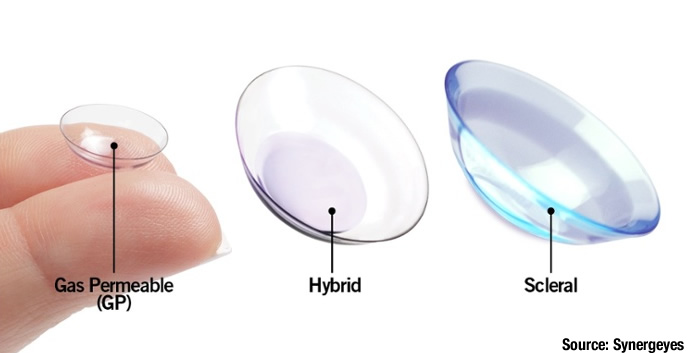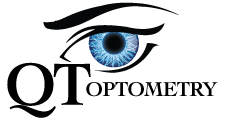Types of Scleral Lenses
Scleral contacts lenses are much larger than traditional/standard gas permeable lenses (9.0-9.5 mm in diameter), and usually have a diameter size that are equal to or greater than that of most soft contact lenses. Scleral lenses can range from 14.5 mm to 24 mm in diameter. Scleral contact lenses falls into three categories, based on the size of the lens, as well as the point of contact with the eye.
- Corneo-scleral lenses and semi-scleral lenses. Larger than traditional/standard GP lenses, these rest close to the junction between the cornea and the sclera.
- Mini-scleral lenses. These lens vault over the entire corneal surface, to rest on the anterior sclera.
- Full scleral lenses. These are the largest scleral lenses available. These lenses has the greatest amount of clearance between the back surface of the lens and the cornea.

Caring for Scleral Contact Lenses
Although daunting at first, these large scleral contact lenses are quite easy to handle with practice. There are many techniques available that will help you manipulate the scleral lenses. Below are three techniques that will be discussed at your visit:
- The DMV Scleral Cup
- The Scleral Ring
- The Three Finger “Tri-Pod” Technique
Procedures for insertion of scleral contact lenses:
- Before applying, fill the entire lens with NON-preservative saline solutions. Inadequate solution within the lens reservoir will lead to “bubbles,” which will interfere with vision. If bubbles does occur, it must be removed and reinserted again, with adequate non-preservative saline solutions within the scleral lens reservoir.
- Never use tap water nor saliva
Who Benefits from Scleral Lenses?
Scleral lenses are best suited for anyone interested in achieving their best vision possible with contact lenses. However, scleral GP lenses are especially helpful for the following patients:
- Irregular corneas.
- Hard-to-fit eyes.
- Dry eyes.
- Post surgical ectasia.


